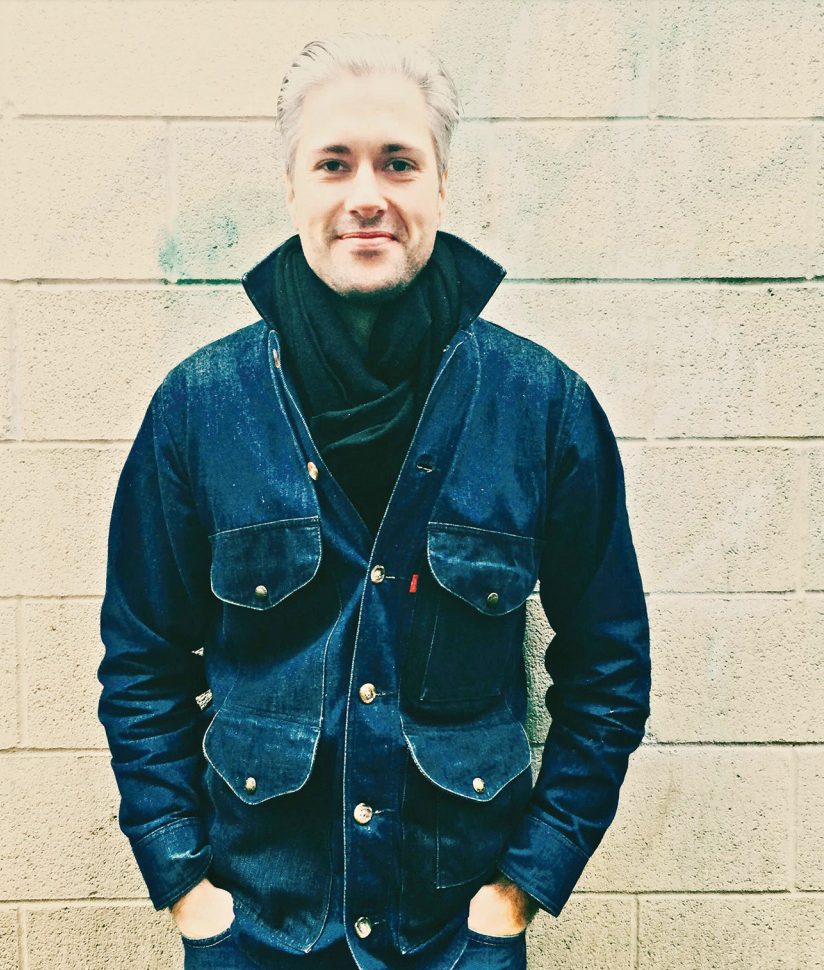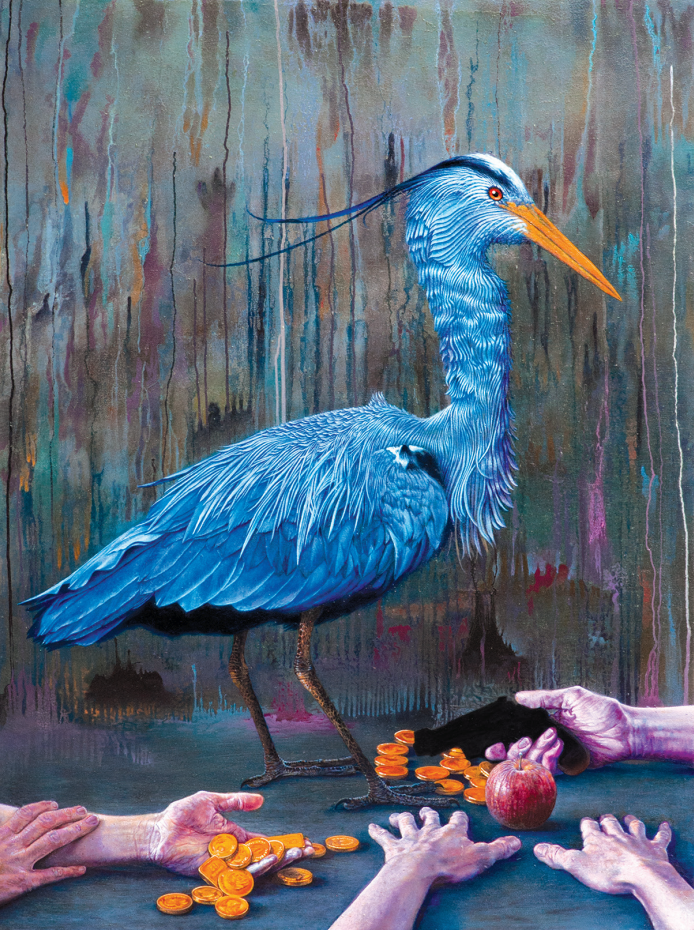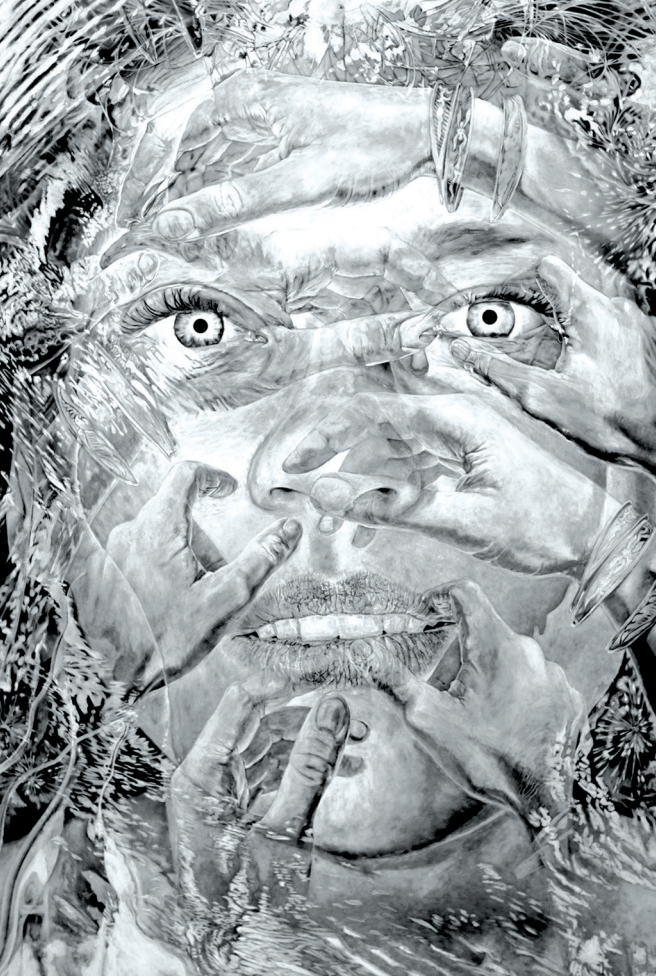Portland Painter Austin Eddy


photo by Mercy McNab
Exalted by the beauty of life and influenced by the importance of the human experience, artist Austin Eddy takes the time to make a visual statement with each stroke of paint, which he carefully places onto his canvas. As an artist with an impressive portfolio, working on illustration for films like Avatar, The Hobbit, Planet of the Apes and other films, he is someone that understands the value of patience within the artistic process. In his latest venture with modern surrealist painting, Eddy makes accessible to the viewer a new perspective and manner by which to examine life.
ELEVEN: You are from California originally, and studied art at the Academy of Art University in San Francisco. What brought you up to Portland?
Austin Eddy: I consider myself a West Coast native more than anything. I was born in Berkeley, California, and lived all over Northern California before my family moved outside of Sun River, Oregon for my 6/7 grade year. While it was super fun to live out there and we got tons of snow in the winter, I felt generally cut off from the world for an 11 year old. The town of Bend had gotten pressure from a special interest group, or church or something to ban MTV in the town and I remember we had to get bootleg VHS copies of music videos of Beavis and Butthead etc. from someone’s brother or cousin who had come to town from Portland. We later moved up to a small town north of Seattle called Mukilteo and I stayed there through High School and some Community College and then moved back to San Francisco when I got a scholarship to attend the Academy of Art University for a summer in 2001. After college I stuck around the Bay for a couple years then moved to New Zealand to work on Avatar. I ended up staying in New Zealand for four years and when it was time to move back to the states I decided Portland sounded like a nice place, it was the only city on the west coast I hadn’t lived in yet, and I have close friends and family that live here.
11: What type of visual artist would you consider yourself to be? What is the name of the style of art that you make?
AE: A good one! I would consider my art to fall into the modern surrealism and realism spectrum. I’ve always been attracted to realism in some form.

“The World of Things” (oil on canvas, 2015)
11: I noticed that your father was an artist influenced by the Tibetan Thangka painting style, can you tell us about how that influenced the type of artist that you have become?
AE: Glen Eddy is my father; he was a notable painter and probably one of the earliest western Tibetan Thangka painters. Painting today is so easy because we just squeeze these perfectly formulated paints out of a tube. My father was interested in preserving the ritual and tradition of Thangka painting and took the time to gather the stones and grind them into pigment and make his own rabbit skin glue and develop his own paints, stretch canvas, etc. While I don’t go to those lengths, I think I was able to absorb some of his patience. I can work on a single painting for months, putting many layers of oil and pigment down and then waiting for each one to dry.
11: What brought you into animation and then allowed you to transition into painting? Tell us a little about the artistic evolution and progression that you have been through.
AE: I’ve always loved animation, but mostly the more “realistic” stuff. I loved watching Ray Harryhausen movies and Akira when I was a kid. When I went to art school, it was originally for fine art, which I have always seen as my calling, but I was just blown away by what people were doing in the animation department. This was around 2001, when all the best animation stuff was really growing fast around San Francisco. Stuff like Pixar, ILM (industrial light and magic), DreamWorks, Lucas Film, Lucas Arts, and The Matrix were all just shot there. There was just a lot of energy in that field at the time so as an artist I jumped in to the animation world. The past 10 years working on movies has been an incredible education for me and has lead me to places I would have never imagined going. When you are working on any creative endeavor, be it painting or working on a film, you are making choices, one choice is succeeded by another and another etc. and the outcome of all those choices leads to the finished work. Working in film is very similar to painting in that it’s about making aesthetic choices.
11: Tell us about your newest work and what you are currently working on.
AE: I’m currently working on a huge painting that is 4×6 feet, which for me seems daunting. It’s a portrait with many tessellated semi-transparent hands seemingly manipulating different areas of the portrait. It’s definitely the largest project I’ve ever attempted in painting and I hope it turns out well!
11: Who are your artistic inspirations or influences that you have had through your career?
AE: I’ve always loved Van Gogh, Klimt, Canova and more recently contemporary artists like Jean-Pierre Roy, Steven Assael. I recently saw a video installation at the Broad museum in LA from Ragnar Kjartansson called The Visitors which was amazing!
11: On your website you state, “I am committed to taking the beauty, uniqueness and mystery of human experiences and making them tangible and accessible.” Can you expand on what you mean by that and how you feel you make these aspects of the human experience more accessible or tangible? Why is it important or valuable to have that accessibility in our culture?
AE: Well, most of our thoughts and feelings are intangible and yet completely unique to each of us, and I believe they are the most important factor in what drives us. Thoughts and feelings are completely subjective, and I think art is a way of sharing or expressing what is subjective. It allows us to be able to transform these subjective aspects into the objective, and these in turn can be interpreted by anyone in a subjective way. In this way, I believe making artwork is a great way to share the strange, beautiful, and unique mystery of life.

“Untitled Work in Progress” (oil on canvas, 2016)
11: How do you feel abstract or surreal art is different from realistic artwork as forms of artistic expression? What does surreal artwork have to offer the artist and the viewer?
AE: In short, a different perspective. For example, I didn’t connect with Pablo Picasso’s art until I was exposed to his early work. He was an absolute genius from an early age. His figure drawings from his early years are amazingly accurate and beautifully rendered. I realized that his later work was not of a naive artist as I had previously thought, but of someone who had chosen a different perspective.
11: What does the theme of hands in the pieces on your website represent?
AE: I like to paint hands because they are what we use to manipulate the world. Next to our face I think they are the most expressive appendage. They are our built in multi-tool, and I think it’s fascinating to think about what we are able to do with our hands.
11: Tell us about your upcoming projects? What is Surreal Salon 8?
AE: Surreal Salon 8 is a national juried exhibition of popsurrealist/lowbrow art. Baton Rouge Gallery will host it for its eighth year from Jan. 4-28 2016. I’ve never been before but I’ll be going to the show on the 22nd!
—Lucia Ondruskova



